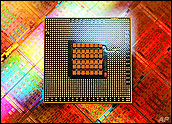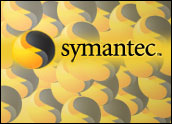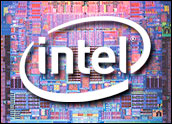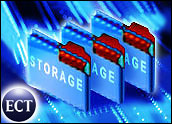
On the heels of Intel’s launch of an environmentally friendly new chip fabrication plant in Arizona, IBM is showing it, too, knows how to be green. The company announced a new silicon reclamation process that won a recent pollution prevention award.
The new process, in operation at IBM’s Burlington, Vt., manufacturing facility, uses a “specialized pattern removal technique” to salvage semiconductor wafers, the silicon disks used to create processors.
The process results in recycled silicon wafers that can be used to create raw material for the growing solar panel industry, which uses them to make photovoltaic cells.
Discarded Wafers
There are about a quarter-million silicon wafers “started” each day globally. Of those, 3.3 percent are scrapped for various reasons, according to the Semiconductor Industry Association.
“In the course of the year, this amounts to approximately 3 million discarded wafers,” said IBM.
Before the scrap wafers are sold to solar panel fabricators they are used as “monitor” wafers for equipment calibration and testing, said the company. When repeated reuse of the wafers makes them too thin for use as monitor wafers, they can then be sold to the solar panel industry.
In addition to saving landfill space, the silicon recycling program saves energy, noted IBM. The solar panel makers can see energy reductions of up to 90 percent by using reclaimed silicon, IBM said.
“These estimated energy savings translate into an overall reduction of the carbon footprint — the measure of the total amount of carbon dioxide (CO2) and other greenhouse gases emitted over the full life cycle of a product or service — for both the semiconductor and solar industries,” said a statement announcing the initiative.
Erasing the Fingerprints
A big hurdle facing wafer recycling efforts was finding a way to efficiently erase from the silicon the imprinted circuitry, described by IBM as “intellectual property” that companies such as itself want to protect.
IBM’s new reclamation process enables a more cost-effective and complete method of erasing the intellectual property from the wafers, the company said.
IBM plans to share details of the process with others in the industry who want to recycle their silicon and is in the process of implementing the procedure at its East Fishkill, N.Y,. semiconductor fab.
The process is one that should make accountants as happy as the environmentalists. IBM said it resulted in savings in 2006 of more than half-million dollars at the Burlington site. “The projected ongoing annual savings for 2007 is nearly $1.5 million and the one-time savings for reclaiming stockpiled wafers is estimated to be more than $1.5 million,” said the company.
Preventing a Solar Slowdown
The silicon remanufacturing technology will also go a long way toward preventing a slowdown in the solar energy industry, a situation that could occur if silicon supply gets tighter.
A severe shortage of silicon in the world “threatens to stall” the solar energy industry’s growth, said Charles Bai, chief financial officer of Chinese solar energy company ReneSola.
“This is why we have turned to reclaimed silicon materials sourced primarily from the semiconductor industry to supply the raw material our company needs to manufacture solar panels,” said Bai.
The Good Fight
When Intel recently turned the key on a new chip fabrication plant in Arizona, it stressed the environmental protections that are in place at the facility. Environmental enlightenment seems to have arrived for the tech industry, Enderle Group Principal Analyst Rob Enderle said.
“Right now, there is a race between the major technology manufacturers to see who can be the most green,” Enderle told TechNewsWorld. “This effort to reuse silicon wafers for the solar industry is almost a perfect example of how creative these firms are becoming.”
While the Intel plant goes to great lengths to conserve and recycle water, a precious commodity in the Southwest, IBM’s effort is geared toward reducing solid waste and conserving manufacturing energy.
“In this instance IBM gets double credit because they not only reuse something that otherwise might go into landfills but it gets used for solar panels which reduce greenhouse gas emissions,” said Enderle. “This is one of those competitions that we can all get behind because, regardless of which company wins, we all win.”





















































